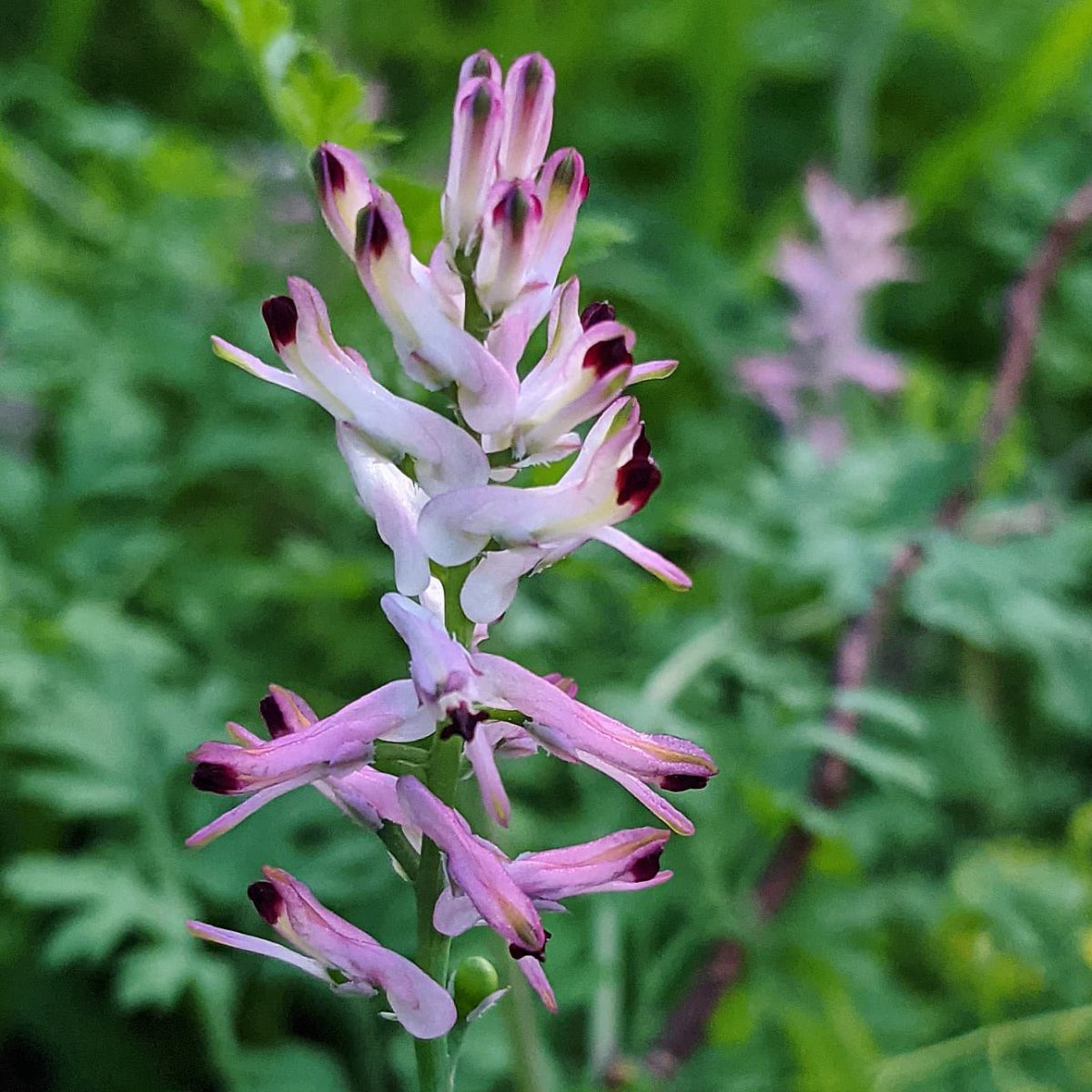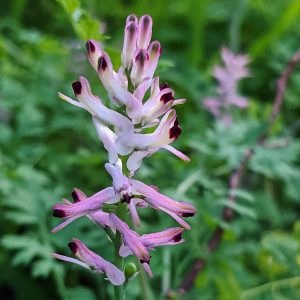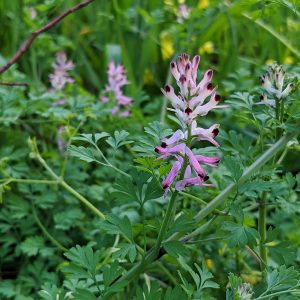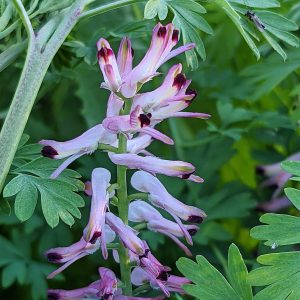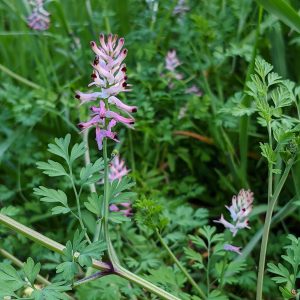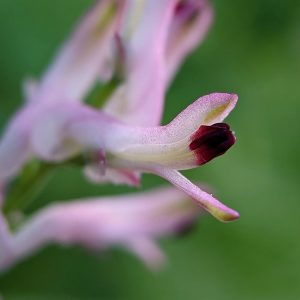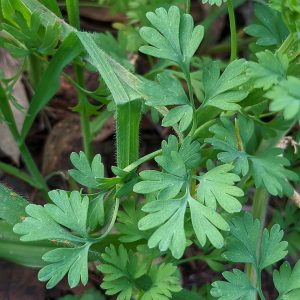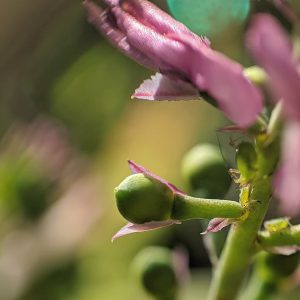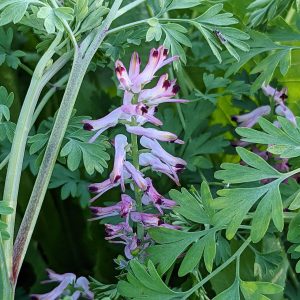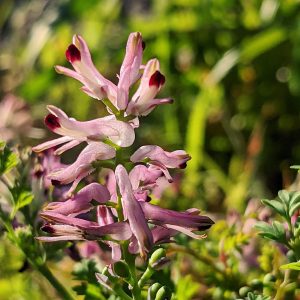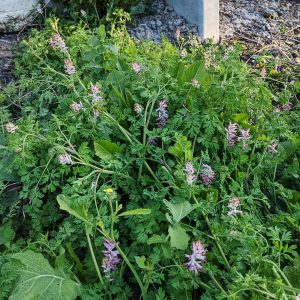Tall Fumitory (Fumaria bastardii), another from a group of familiar West European annuals which make themselves scrabbly nuisances of gardens, crops and damaged ground.
A first Victorian collection of Tall Fumitory was made at Queenscliff in 1889, by which time it was likely already common. Treated broadly by many observers as Fumaria officinalis, this is one of several species of Fumitory so commonly weeds of English gardens that their arrival in Australia was almost completely unremarked upon.
An uptick of newspaper correspondence about Fumitory in the early 1900s suggests a fading collective memory of the plant, as various columnists reassured readers that the plant was ‘quite worthless’ but inoffensive and not known to be poisonous. Behind those easy dismissals, more insidious qualities were acknowledged occasionally, as per WA’s Western Mail in 1928: ‘It is one of the most troublesome weeds in my garden, because it is so pretty that I used to let it grow in odd places to provide green for the fowls until the ground has become impregnated with seeds. It is, however, easy to destroy…’
Fumitories may have also become more common after Federation as grain and oilseed cropping and fruit-growing expanded dramatically, spurred by gov’t policy and wartime and interwar markets. Fumitory seeds were often difficult to exclude from seed grain, suppressing crop yields and briefly earning the epithet ‘Pinkweed’ in some states, a good indication the infestations were serious. The plants were well-suited to conditions on some orchards; SA field naturalists reported a 1918 trip to orangeries at Paradise on the Torrens, where Pinkweed was ‘practically shutting out the sun’s rays from the young trees [it was] climbing.’
Today, Tall Fumitory is most easily recognised by its pale upper petal, distinguishing it from the similarly pink-hued Wall Fumitory (Fumaria muralis) in which both upper and lower petals have a dark red/black tip. Other details include the shape of the upper petal, seed shape and a yellowish stripe on the inner petal.
View Original Post on Instagram
Search for information about Fumaria bastardii in the Flora of Victoria
View information and occurrences of Fumaria bastardii on the Atlas of Living Australia
